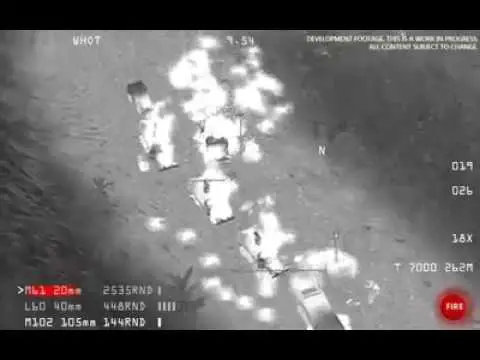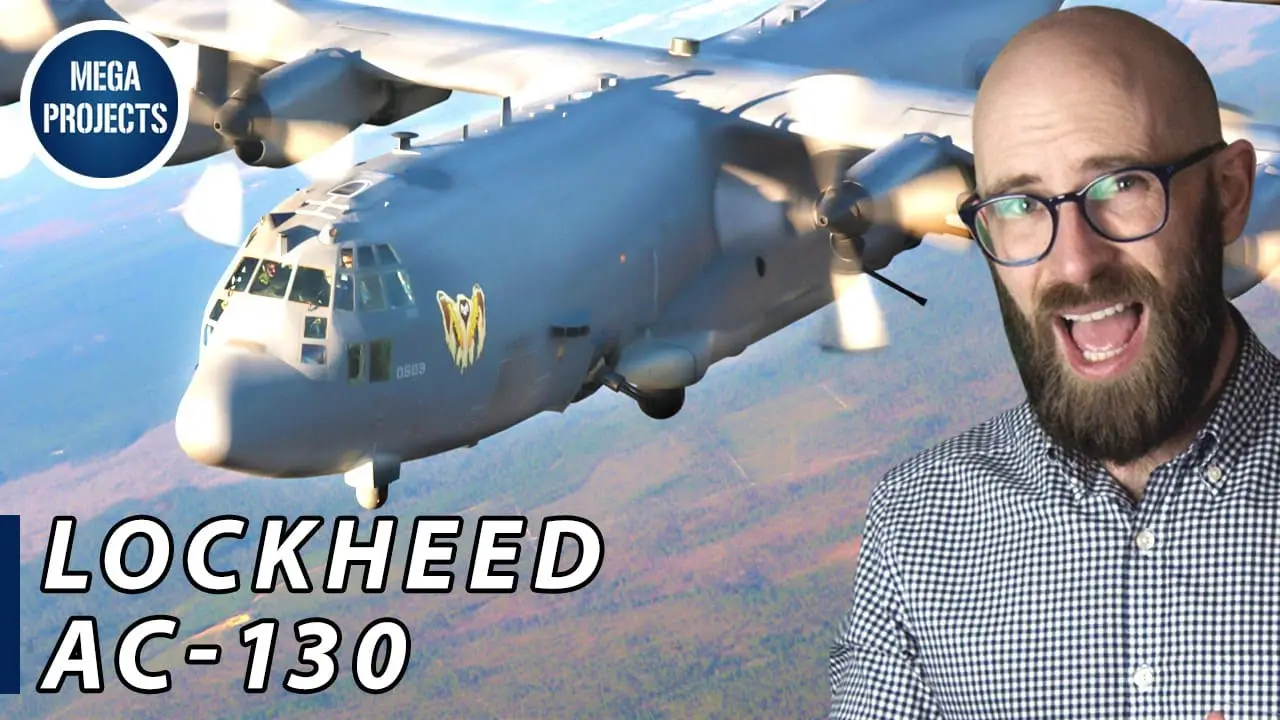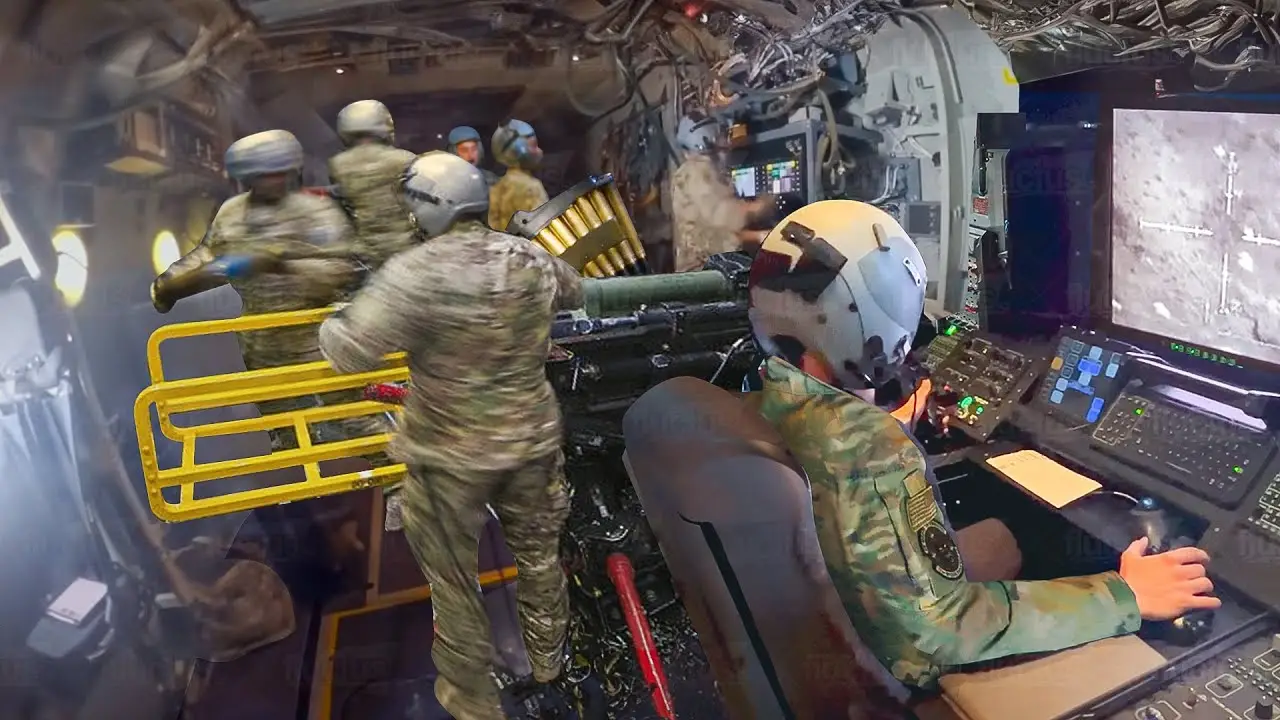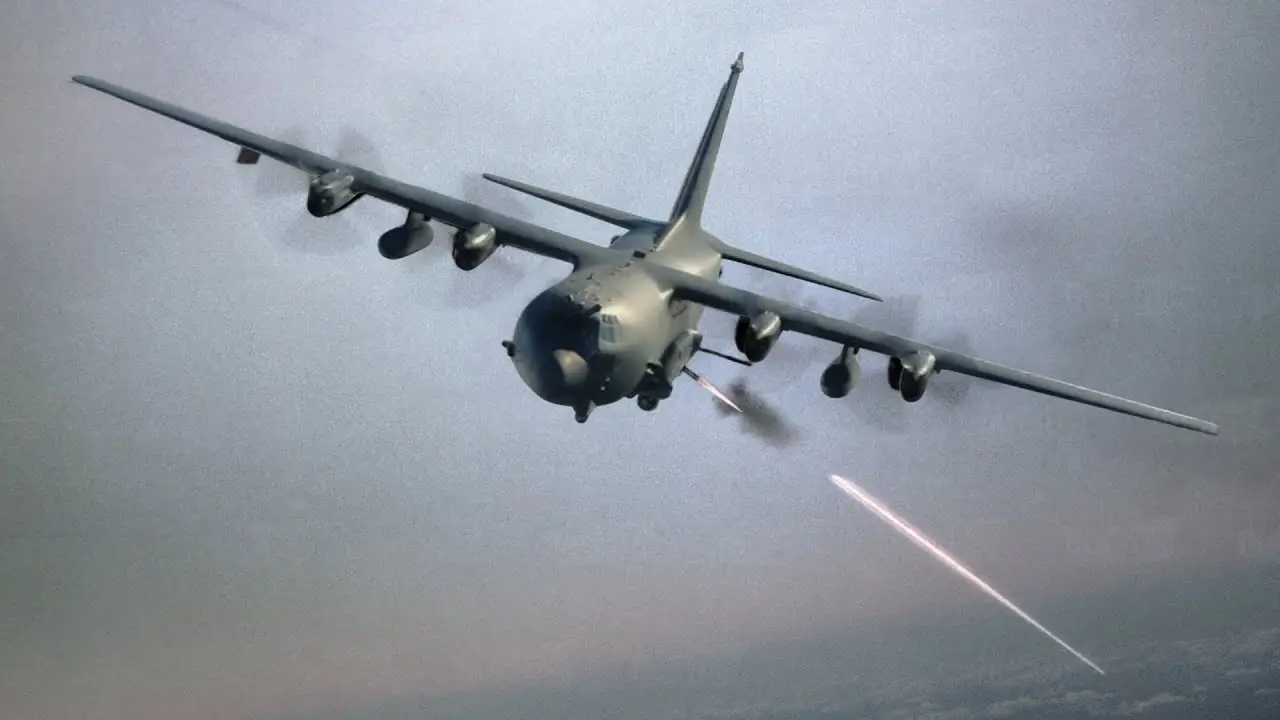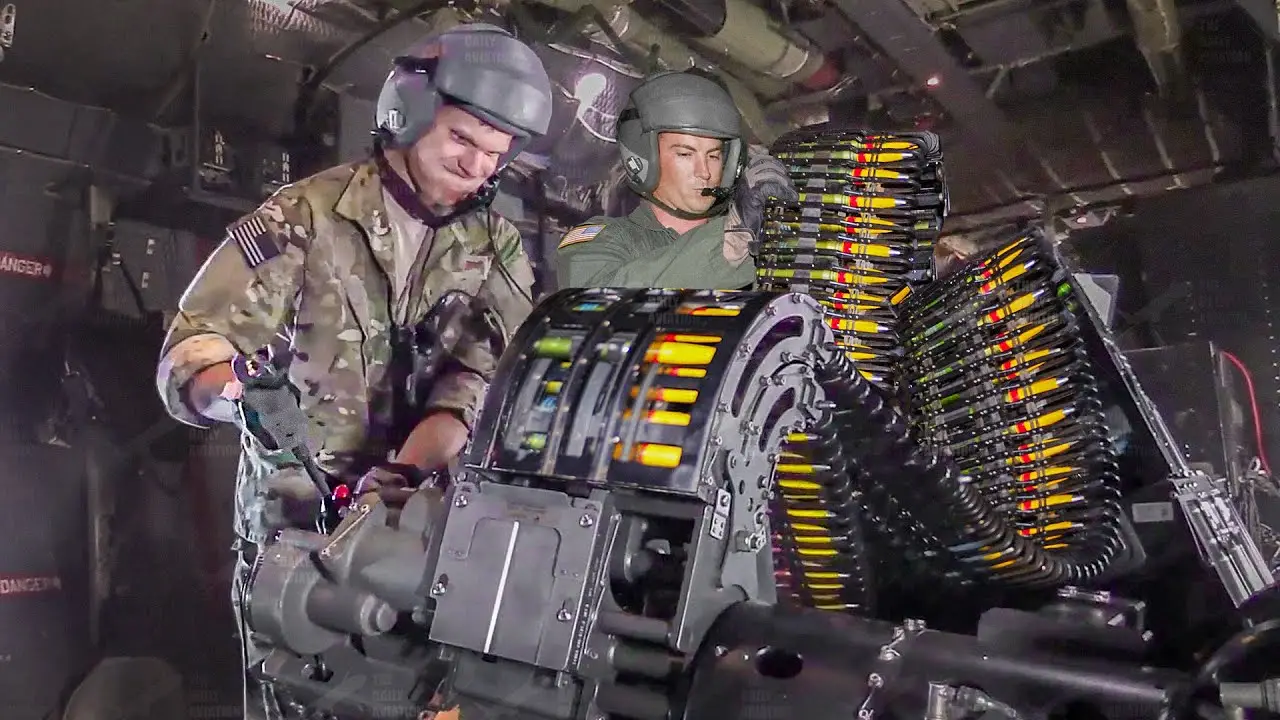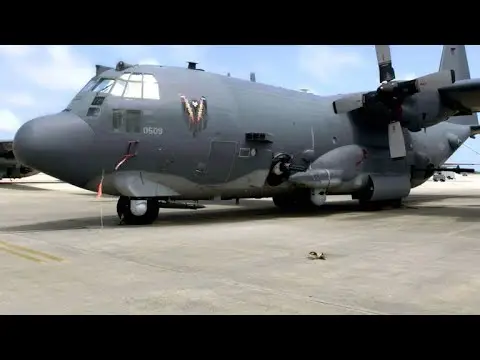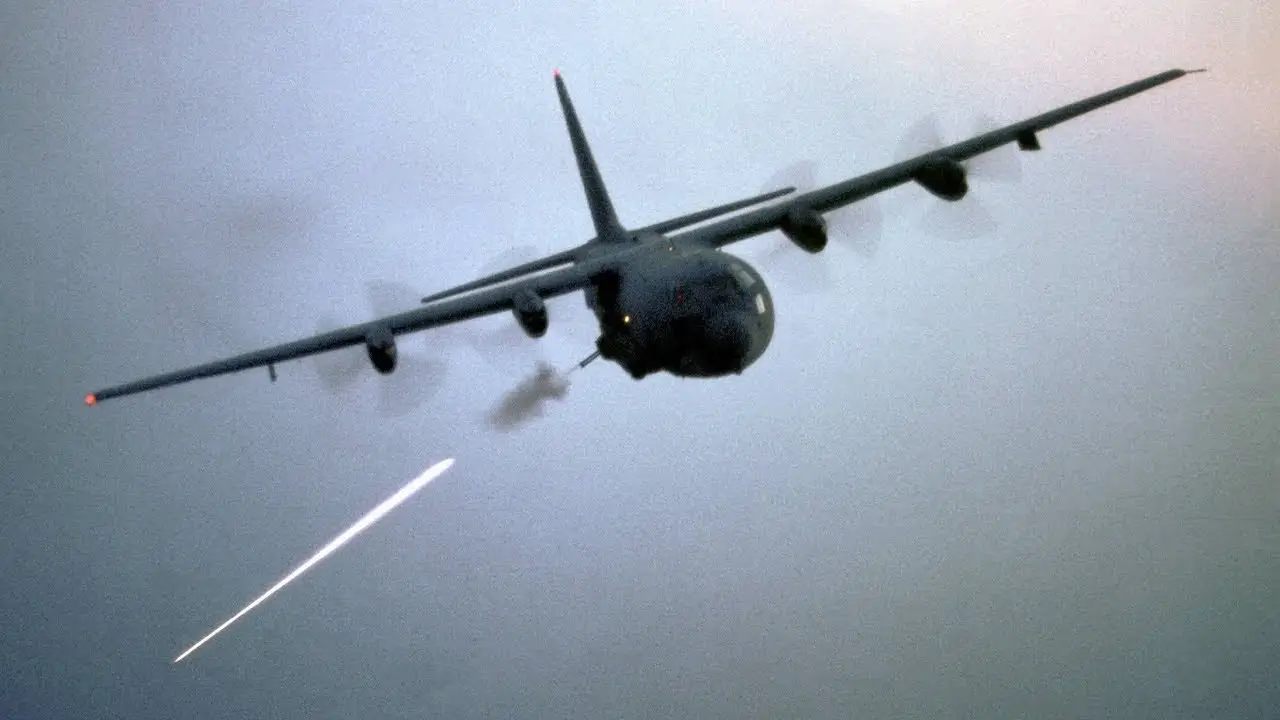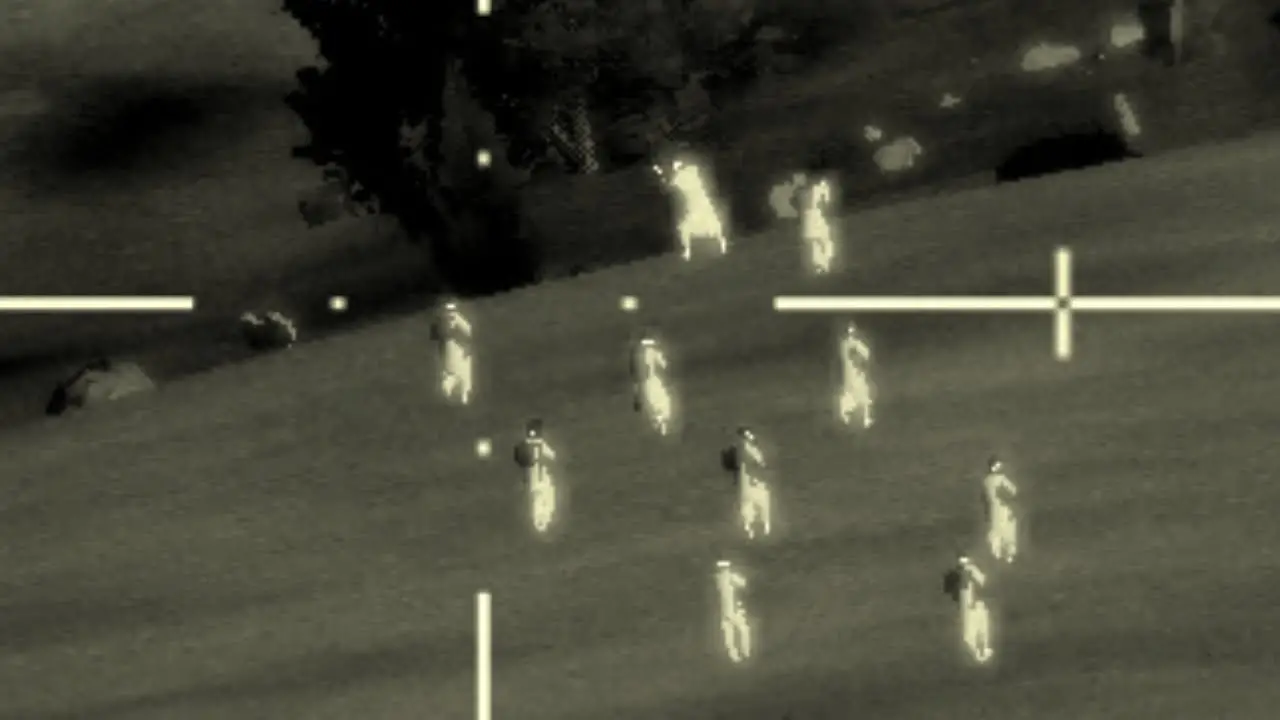the AC-130 Gunship History, Capabilities, and More
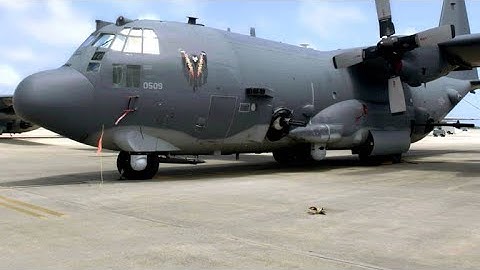
The AC-130 Gunship is a fearsome and iconic aircraft, known for its exceptional firepower and relentless presence in the battlefield. As one of the most advanced and heavily armed aerial weapons systems, the AC-130 has played a crucial role in numerous military operations and has cemented its place in history as a formidable force.
In this comprehensive guide, we will delve into the history, design, armament, capabilities, and future of the AC-130 Gunship, providing an in-depth understanding of this powerful weapon.
Introduction to the AC-130 Gunship
The AC-130 Gunship is a variant of the venerable C-130 Hercules transport aircraft. It was first developed by the United States Air Force (USAF) in the late 1960s to provide air support for ground troops during the Vietnam War. The concept behind the AC-130 was to create a flexible and versatile platform that could deliver accurate and sustained firepower on enemy targets while operating at low altitudes and slower speeds. The initial development of the AC-130 involved equipping the aircraft with side-firing cannons and heavy machine guns, which proved to be effective against ground targets.
Over the years, the AC-130 has undergone several upgrades and modifications, making it one of the most sophisticated and lethal weapons in the world. Its unique combination of mobility, firepower, and precision make it a vital asset in modern warfare, capable of providing close air support, interdiction, and armed reconnaissance missions. Let us now take a closer look at the history of the AC-130 Gunship.
History of the AC-130 Gunship
The origins of the AC-130 Gunship can be traced back to the early days of the Vietnam War, where the USAF recognized the need for a dedicated close air support and fire support platform for ground forces. In 1967, the USAF initiated the “Pave Pronto” program to convert existing C-130E aircraft into gunships. The first prototype AC-130A “Spectre” was delivered in 1968 and entered service with the 4th Special Operations Squadron (SOS) in Vietnam.
During the Vietnam War, the AC-130 Gunship proved to be a vital asset in providing close air support for ground troops, as well as interdicting enemy supply routes and attacking enemy positions. Its success in combat led to the development of newer variants, such as the AC-130H “Spectre II” and the AC-130U “Spooky II”, which incorporated upgraded avionics, sensors, and weapons systems.
Since then, the AC-130 has been actively involved in various military operations, including the Gulf War, Operation Enduring Freedom, and Operation Iraqi Freedom. Its versatility and firepower have made it an indispensable tool for the USAF, with plans for further modernization and upgrades in the future.
Timeline of the AC-130 Gunship’s Development
| Year | Event |
|---|---|
| 1967 | USAF initiates “Pave Pronto” program to convert C-130s into gunships |
| 1968 | First prototype AC-130A delivered and enters service in Vietnam |
| 1972 | Production of AC-130H model begins |
| 1991 | AC-130Hs deployed in Operation Desert Storm |
| 1995 | AC-130U “Spooky II” variant enters service |
| 2001 | First deployment of AC-130Us in Operation Enduring Freedom |
| 2003 | AC-130s heavily involved in Operation Iraqi Freedom |
| 2012 | AC-130J “Ghostrider” prototype delivered |
| 2016 | AC-130U “Spooky II” officially retired from service |
Design and Specifications of the AC-130 Gunship
The AC-130 Gunship is based on the C-130 Hercules airframe, with significant modifications to accommodate its unique role. It has a length of 97 feet, a wingspan of 132 feet, and a height of 38 feet. It is powered by four turboprop engines and can reach a maximum speed of 300 knots (345 mph). The aircraft’s maximum takeoff weight is approximately 155,000 pounds, and it can carry up to 42,000 pounds of munitions.
One of the most notable design features of the AC-130 Gunship is its ability to operate at low altitudes and slow speeds. This allows the aircraft to fly over a target area for an extended period, providing sustained firepower and accurate targeting. Its large payload capacity also allows for a diverse range of weaponry to be carried, making it a versatile platform for various missions.
A-10 Thunderbolt II History, Design, and Combat Capabilities
Specifications of the AC-130U “Spooky II”
| Specification | Details |
|---|---|
| Length | 97 ft |
| Wingspan | 132 ft |
| Height | 38 ft |
| Maximum Speed | 300 knots (345 mph) |
| Maximum Takeoff Weight | 155,000 lb |
| Engines | Four Allison T56-A-15 turboprops |
| Payload Capacity | Up to 42,000 lb of munitions |
| Crew | Pilot, co-pilot, navigator, fire control officer, TV operator, infrared detection set operator, electronic warfare officer, loadmaster |
| Armament | 25mm GAU-12/U Equalizer cannon, 40mm L60 Bofors cannon, 105mm M102 howitzer, AGM-176 Griffin missile, GBU-39 Small Diameter Bomb, GBU-53/B StormBreaker bomb |
Armament and Capabilities of the AC-130 Gunship
The AC-130 Gunship’s primary role is to provide close air support for ground forces, with its main armament being its powerful cannons and guns. The AC-130U “Spooky II” variant is equipped with a 25mm GAU-12/U Equalizer cannon, a 40mm L60 Bofors cannon, and a 105mm M102 howitzer. These weapons are controlled by a Fire Control Officer (FCO) who utilizes various sensors and targeting systems to deliver accurate and sustained fire on enemy targets.
In addition to its cannons, the AC-130 Gunship also carries a variety of precision-guided munitions, including AGM-176 Griffin missiles, GBU-39 Small Diameter Bombs, and GBU-53/B StormBreaker bombs. These munitions allow the AC-130 to engage targets at longer ranges and with greater precision, making it a versatile platform for interdiction and armed reconnaissance missions.
F16 Fighter Aircraft An In-Depth Exploration of an American Legend
Capabilities of the AC-130 Gunship
| Capability | Details |
|---|---|
| Sustained Firepower | Can deliver continuous fire on enemy targets for an extended period |
| Accurate Targeting | Utilizes advanced sensors and targeting systems for precise engagements |
| Versatile Weaponry | Can carry a variety of weapons, including cannons and precision munitions |
| Operates at Low Altitudes and Speed | Can fly at slow speeds and low altitudes to provide sustained support |
| Multiple Mission Roles | Can perform close air support, interdiction, and armed reconnaissance missions |
| All-Weather Capabilities | Equipped with advanced sensors and systems for all-weather operations |
Role and Missions of the AC-130 Gunship
The primary role of the AC-130 Gunship is to provide close air support for ground forces. This involves flying over a designated area and providing continuous firepower on enemy targets, effectively neutralizing threats and supporting friendly troops. The AC-130 can also perform interdiction missions, where it can disrupt enemy supply routes and attack high-value targets.
In addition to these roles, the AC-130 can also conduct armed reconnaissance missions, where it utilizes its advanced sensors and targeting systems to gather intelligence and engage targets as needed. Its versatility and ability to operate in various mission roles make it a vital asset in any military operation.
Missions of the AC-130 Gunship
| Mission Role | Details |
|---|---|
| Close Air Support | Provides continuous fire support for ground troops |
| Interdiction | Disrupts enemy supply routes and attacks high-value targets |
| Armed Reconnaissance | Utilizes sensors and targeting systems to gather intelligence and engage targets |
Notable Operations of the AC-130 Gunship
Throughout its history, the AC-130 Gunship has been involved in numerous military operations, showcasing its effectiveness and capabilities in combat. Some of the most notable operations featuring the AC-130 include:
- Vietnam War: The AC-130’s first combat deployment where it provided close air support and interdiction missions.
- Operation Desert Storm: The AC-130H was extensively used in this operation, attacking Iraqi ground troops and vehicles and destroying strategic targets.
- Operation Enduring Freedom: The AC-130U played a crucial role in this operation, providing close air support and armed reconnaissance missions in Afghanistan.
- Operation Iraqi Freedom: The AC-130 was heavily involved in this operation, conducting interdiction missions and providing support for ground troops.
- Battle of Mogadishu: The AC-130U “Spooky II” played a vital role in this battle, supporting US forces during the 1993 humanitarian mission in Somalia.
Introduction to Combat Aircrafts
Advantages and Disadvantages of the AC-130 Gunship
Like any weapon system, the AC-130 Gunship has its advantages and disadvantages. Let us take a closer look at some of them:
Advantages
- Versatile platform capable of performing multiple mission roles
- Can operate in all-weather conditions
- High payload capacity allows for diverse weaponry
- Sustained firepower provides continuous support for ground troops
- Advanced sensors and targeting systems provide accurate engagements
Disadvantages
- Limited defense capabilities against anti-aircraft weapons
- Requires extensive maintenance and training
- Relatively slow speed and low altitude make it vulnerable to enemy fire
- Heavy reliance on air superiority for safe operations
Despite its limitations, the AC-130 Gunship remains a formidable weapon and has proven its worth in numerous operations.
Training and Crew Requirements for the AC-130 Gunship
The crews operating the AC-130 Gunship undergo extensive training to ensure they are ready to handle the aircraft’s unique capabilities and fulfill their roles effectively. The training for the AC-130 crew includes both classroom and simulator instruction, as well as hands-on experience with the aircraft itself.
The standard crew for the AC-130 consists of a pilot, co-pilot, navigator, fire control officer (FCO), TV operator, infrared detection set operator (IRDSO), electronic warfare officer (EWO), and loadmaster. Each crew member is responsible for specific duties related to flying, navigating, and engaging targets, ensuring effective teamwork and coordination.
Future of the AC-130 Gunship
The AC-130 Gunship has undergone numerous upgrades and modernization programs throughout its history, and the USAF continues to invest in its future capabilities. The latest variant, the AC-130J “Ghostrider”, is currently in development and will feature updated avionics, sensors, and weapons systems. The AC-130J will also have improved performance and will be able to operate at higher altitudes, making it less vulnerable to enemy fire.
In addition to these upgrades, the USAF is also exploring the possibility of equipping the AC-130 with directed energy weapons, such as high-powered lasers. These weapons would provide the AC-130 with even greater precision and lethality, making it an even more formidable force on the battlefield.
Conclusion: Impact and Legacy of the AC-130 Gunship
Throughout its history, the AC-130 Gunship has played a crucial role in various military operations, providing close air support, interdiction, and armed reconnaissance missions. Its unique combination of mobility, firepower, and precision has made it a vital asset in modern warfare, and its legacy continues to inspire future developments in aerial weapons systems.
The AC-130 Gunship remains one of the most iconic and feared aircraft in the world, and its impact on the battlefield cannot be overstated. As technology continues to advance and new threats emerge, we can expect the AC-130 to evolve and adapt, cementing its place as a key player in modern military operations.

